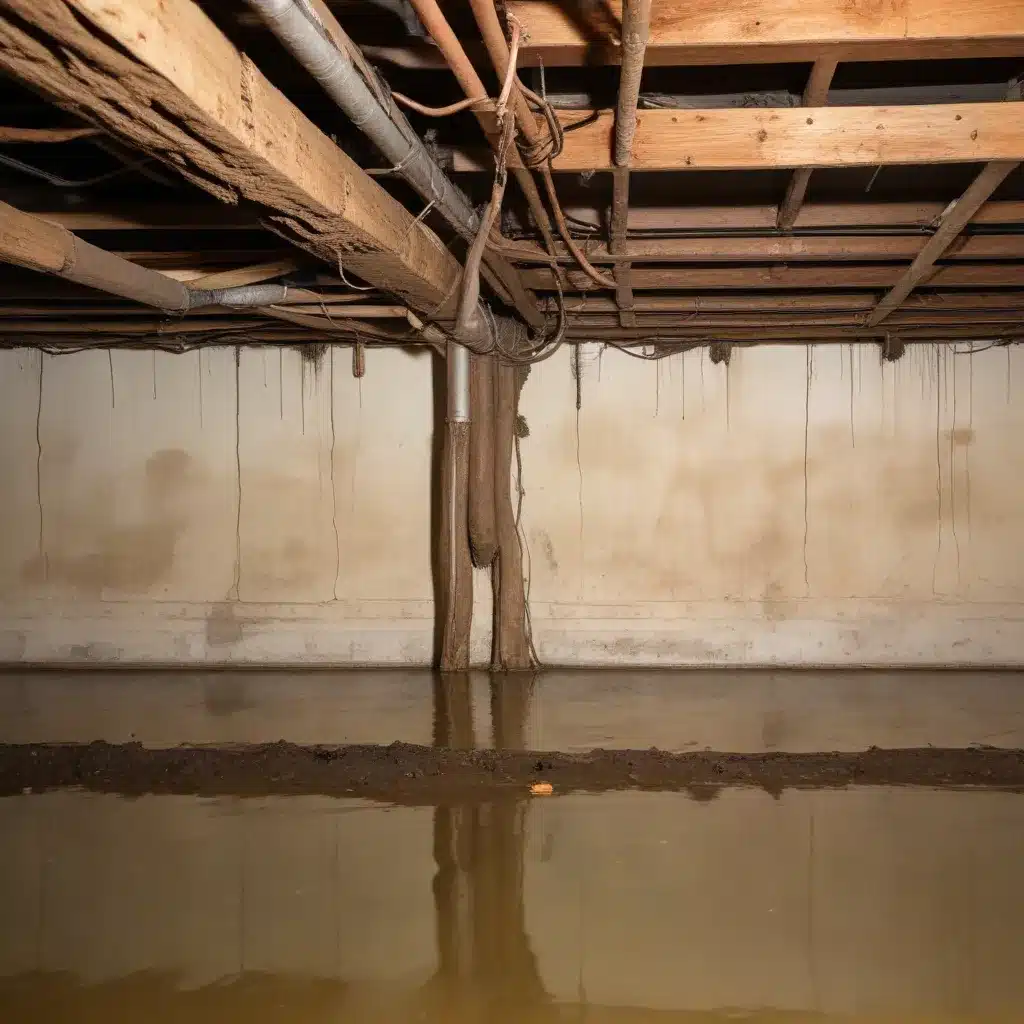
As an experienced water damage restoration specialist in Orlando, I’ve seen my fair share of basement flooding and water intrusion issues. It’s a common problem that many homeowners struggle with, but the solutions aren’t always straightforward. Over the years, I’ve learned that effectively combating basement water leaks requires a deep understanding of the root causes and a strategic approach to prevention and remediation.
Understanding the Causes of Basement Water Intrusion
One of the primary culprits behind basement water leaks is hydrostatic pressure. This occurs when groundwater levels around your house rise above your basement floor, exerting pressure that forces water through cracks or gaps in your foundation. Lateral pressure, caused by oversaturated soil around your foundation, can also create cracks that allow water to seep into your basement.
Another common issue we see is poor drainage around the home. When gutters and downspouts are clogged or improperly installed, they can’t effectively divert water away from the foundation, leading to pooling and water infiltration. The grading of the land surrounding your home is also crucial – if the ground slopes toward the foundation instead of away from it, water will naturally gravitate towards the basement.
In some cases, structural issues like foundation cracks or inadequate waterproofing can be the root cause of basement water problems. Over time, these defects can worsen, allowing more water to penetrate the basement.
Identifying the Signs of Water Intrusion
Recognizing the early warning signs of basement water leaks is key to addressing the problem before it becomes a full-blown disaster. Look for damp or discolored patches on your basement walls or floor, a musty odor indicative of mold and mildew, and visible cracks in the concrete. Efflorescence, a white, powdery substance on your walls or floor, is another telltale sign that water is seeping in.
It’s also important to pay attention to the timing of the water intrusion. If you notice water pooling or seeping in after heavy rain or snowmelt, that points to environmental factors like poor drainage or high water tables. Persistent dampness, on the other hand, may suggest structural issues or inadequate waterproofing.
Tackling the Root Causes
Once you’ve identified the root causes of the water intrusion, you can begin to address them systematically. Starting with the exterior of your home, it’s crucial to inspect the foundation for cracks and gaps, ensure your gutters and downspouts are clear and properly directing water away from the house, and ensure the landscaping slopes away from the foundation.
Waterproofing your basement walls with a sealant or membrane can also help block moisture and prevent it from seeping through. Installing a sump pump in the lowest part of your basement can also be an effective way to divert water away from the home.
For more advanced waterproofing techniques, consider installing an interior water drainage system. This involves excavating around the perimeter of your basement, installing a perforated drain pipe, and covering it with gravel to facilitate water flow. While labor-intensive, this method has a high success rate in preventing water intrusion.
Maintaining a Dry Basement
Keeping your basement dry is an ongoing process that requires regular maintenance and vigilance. Perform routine checks, especially during heavy rain or snowmelt seasons, to look for any signs of water seepage or damage. Promptly address any issues you find, whether it’s a clogged gutter or a crack in the foundation.
It’s also important to understand that certain geographical locations, like areas with high water tables or heavy rainfall, may be more prone to basement water intrusion. In these cases, it’s even more critical to have a robust waterproofing system in place and to remain proactive in addressing any issues that arise.
The Health Risks of Basement Water Seepage
Ignoring water seepage in your basement can have serious consequences for your family’s health. Damp environments provide the perfect breeding ground for mold and mildew, which can cause respiratory problems, allergic reactions, and other health issues. Contaminated water can also lead to the spread of diseases.
Addressing water intrusion promptly is not only crucial for maintaining the structural integrity of your home but also for ensuring a safe and healthy living environment. The costs of water damage repair can vary widely, from $1,000 to $10,000 or more, depending on the extent of the damage. While it may seem daunting, the long-term benefits of a dry, mold-free basement far outweigh the upfront investment.
Partnering with Professionals
When it comes to water damage restoration, mold remediation, and emergency services, it’s always best to work with experienced professionals. At Orlando Water Damage Restoration, our team of experts has the knowledge and tools to quickly identify the root causes of your basement water issues and implement the most effective solutions.
We take pride in our attention to detail, our commitment to customer satisfaction, and our ability to handle any water-related emergency, from burst pipes to major flood events. Whether you need assistance with insurance claims, emergency cleanup, or long-term waterproofing, we’re here to help you keep your basement dry and your home safe.
Remember, addressing basement water intrusion is not a one-time fix – it requires ongoing vigilance and proactive maintenance. By working closely with a trusted water damage restoration partner, you can keep your basement dry, your home’s structural integrity intact, and your family’s health protected. Together, we’ll navigate the challenges of basement water management and ensure your property remains a safe and secure haven.

